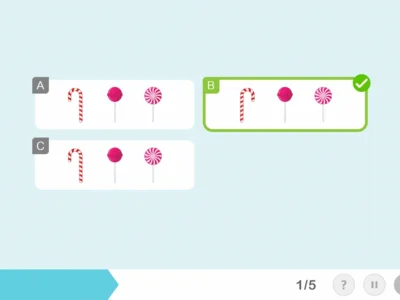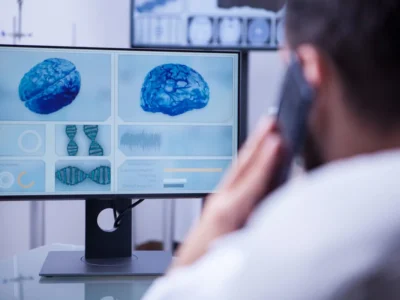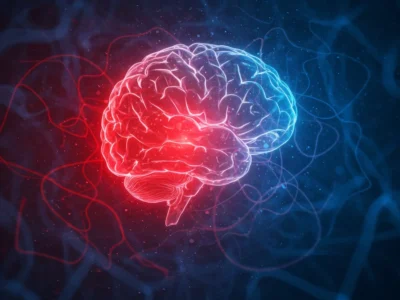Neuropsychologist Lidia García Pérez explains in this article the cognitive mechanisms of errorless learning and discusses when it would be a good option for cognitive rehabilitation.
Errorless learning is a method commonly used in neuropsychological memory rehabilitation, given its advantage for amnesic patients over traditional learning, which allows and takes advantage of errors. However, there is evidence that its results can vary significantly depending on various factors such as the severity of the damage, the specific learning task, or the neuropsychological profile of the patients [1].
Is errorless learning then the best therapeutic option for memory deficits? And for other deficits such as executive functions?
In this post I review the cognitive mechanisms that have been proposed to explain the advantage of errorless learning over errorful learning in memory rehabilitation, with the aim that this update may be useful in determining when this type of technique can benefit patients in the field of cognitive neurorehabilitation.
What is errorless learning?
Errorless learning refers to a way of training in which attempts are made to prevent the person beginning to learn certain information from making errors, in contrast to traditional learning, where errors are part of the learning process itself [e.g., 1].
In the clinical setting, this approach is applied as a guiding principle in the rehabilitation of patients with severe memory deficits, since they have a particular risk of learning the errors (and not from the errors) they make.
Method of errorless learning
Although there are different procedures, the standard method of errorless learning consists in presenting the patient with a fragment of the information to be learned (for example, a degraded image of an object, or the root of a word), immediately afterwards also presenting the full correct response and then ensuring that they re-encode it in some way (by repeating it verbally, writing it down, etc.).
This way of proceeding involves basing learning exclusively on the (repeated) processing of the information, avoiding long-term memory retrieval through free recall to minimize the likelihood of error.
However, we know that one well-established principle of learning and memory is that retrieval practice of information benefits the recall of that information by itself (and not because of the additional processing it implies [2, 3]). Therefore, to the extent that it is restrictive and prevents attempts to retrieve the information, errorless learning becomes a passive form of learning that does not take advantage of the effects of retrieval practice.
Trial-and-error methods, on the other hand, do encourage the patient to make retrieval attempts, facilitating the consolidation of learning.
A recent systematic review of studies that tested the advantage of errorless learning over errorful methods in different populations with memory problems [1] concluded that, although the evidence generally suggests that this approach can be useful in memory rehabilitation, not all groups with these types of impairments seem to benefit from errorless learning more than from errorful learning, and that errorless learning also presents some limitations.
Why is errorless learning then considered the method of choice for the rehabilitation of primary memory disorders?
Cognitive mechanisms of the advantage of errorless learning
Errorless learning began to be developed within the rehabilitation of patients with severe anterograde amnesia, after it was observed that despite the severe explicit memory impairments they exhibited, they retained intact procedural memory [4, 5].
The first studies that compared memory performance after errorless and errorful learning [4, 5] found that, indeed, patients with amnesia learned more words when they were trained so that they did not make errors, than when a procedure was used with which they had made errors.
These early works interpreted that the superiority of errorless learning was due to how implicit memory works: during implicit learning encoding follows the strength of the response to the stimulus, being indifferent to whether the response is correct or incorrect, so implicit recall does not distinguish between errors and successes, but between strong and weak associations. Therefore, the authors of these works concluded that eliminating errors improves the learning of amnesic patients because it prevents the influence and confusion of the activation of errors.
Since then, the debate about the amnesic mechanisms of the advantage of errorless learning has essentially revolved around two positions: the explanation based on implicit memory and the explanation based on explicit memory [e.g. 1, 6, 7].
Implicit memory–based explanation
The implicit explanation states that it is the impairment of explicit memory in patients with amnesia that prevents them from remembering the errors they make, so by not being able to remember them and take them into account on subsequent occasions they continue to make errors, since they can only base their learning on implicit memory.
Explicit memory–based explanation
The explicit explanation claims that these patients benefit more from errorless than errorful learning because they make use of residual explicit memory. Their argument is based on the observation that patients with more preserved explicit memory performed better after errorless learning than patients with more severe explicit memory impairments [7].
Source memory–based explanation
A third explanation refers to source memory or origin (source memory), which involves the recall of the context of an event dissociated from the recall of its content [1, 7].
According to this proposal, impairment of source memory would cause the specific difficulty of distinguishing elements learned through feedback from those self-generated, so that the person confuses the information to be learned with their own errors. Thus, to the extent that this type of memory is impaired, this hypothesis predicts that errorless learning will be a better option than errorful learning by preventing the interference of these errors on recall.
Other possible applications of errorless learning: attention or executive function impairments
The ability to detect and monitor errors and to modify behavior based on feedback or feedback appear to be, therefore, central to explanations of why errorless learning works better in amnesic patients than trial-and-error [1].
On the other hand, it has been suggested that source memory is in part mediated by the frontal lobe [1, 7], in particular by the left and right prefrontal cortices, which are areas involved in attention and executive control functions, as well as in error detection and adjustments through the comparison of inputs or incoming stimuli with internal representations in long-term memory.
All of this has led some authors to consider the involvement of executive functions in the advantage of errorless learning. Recently, a key role has been proposed for processes of attention and executive control that would influence basic information processing, working memory, and episodic memory [1].
Specifically, the authors suggest that, through the allocation of sustained attention resources, executive control processes “guide stimulus processing, allow goal-directed access and manipulation of internal representations, and support the maintenance of those representations. Therefore, they enable the comparison of an external stimulus with stored internal representations and the integration of the recollection of an event’s content with knowledge of its source or context (…). Consequently, the effectiveness of approaches (…) may vary in part depending on the extent to which they make appropriate demands and support the optimal functioning of attentional processes” [1].
Therefore, according to this proposal, insofar as attentional processes and error monitoring are critical for learning, and insofar as they are compromised in neurological patients, it will be important to consider the application of errorless procedures not only in patients with primary memory disorders, but also in the rehabilitation of patients with impairments of sustained attention and/or executive functions.
Bibliography
- Clare L& Jones RS (2008). Errorlesslearning in therehabilitation of memoryimpairment: A criticalreview. NeuropsycholRev, 18:1-23.
- Carrier M&Pashler H(1992). Theinfluence of retrievalonretention. Memory andCognition, 20: 633.
- Ruíz Rodríguez, M. (2004). The Faces of Memory. Madrid, Spain: Pearson Educación.
- Glisky EL, Schacter, DL, Tulving E (1986). Learning and retention of computer-relatedvocabulary in memory-impairedpatients: method of vanishingcues. Journal of Clinical and Experimental Neuropsychology, 8(39): 292-312.
- Baddeley A & Wilson BA (1994). Whenimplicitlearning fails: amnesia and the problem of error elimination. Neuropsychologia, 32(1): 53-68.
- Anderson ND&CraikFI (2006).Themnemonicmechanisms of errorlesslearning. Neuropsychologia, 44(14): 2806-13.
- Anderson ND, Guild EB, Cyr AA, Roberts J, Clare L (2012).Contributions of frontal and medial temporal lobefunctioning to errorlesslearningadvantage. NeuropsycholRehabil, 22(2):169-86.
If you enjoyed this article about the cognitive mechanisms of errorless learning, you may also be interested in the following articles:
“This article has been translated. Link to the original article in Spanish:”
Mecanismos cognitivos del aprendizaje sin error







 Design of meaningful activities for patients with dementia and healthy aging
Design of meaningful activities for patients with dementia and healthy aging
Leave a Reply